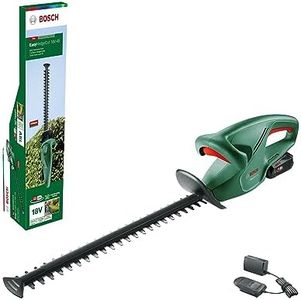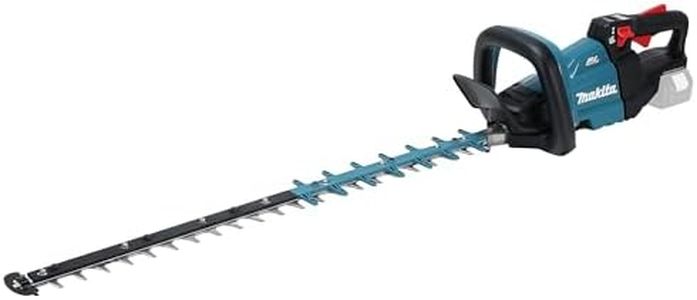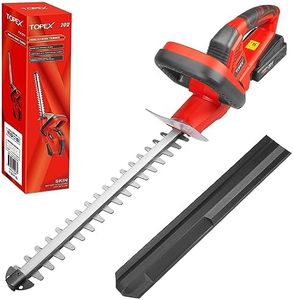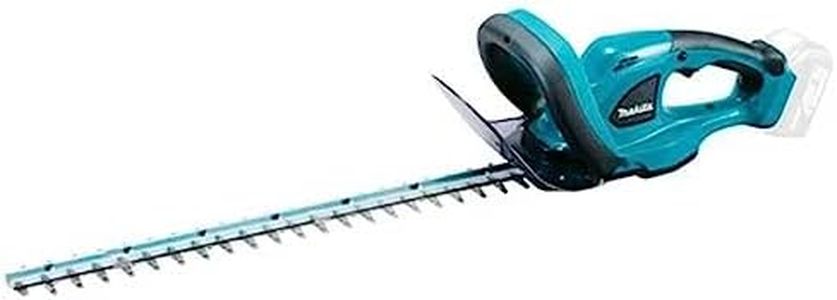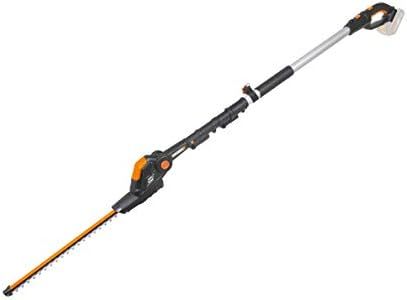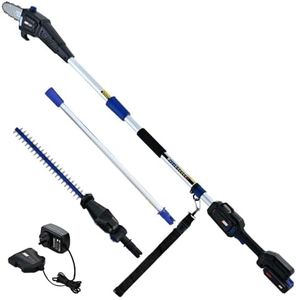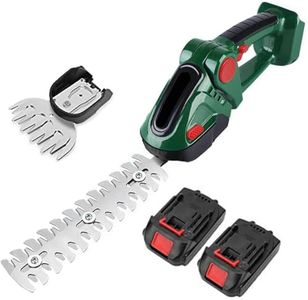We Use CookiesWe use cookies to enhance the security, performance,
functionality and for analytical and promotional activities. By continuing to browse this site you
are agreeing to our privacy policy
10 Best Cordless Hedge Trimmers
From leading brands and best sellers available on the web.Buying Guide for the Best Cordless Hedge Trimmers
Choosing a cordless hedge trimmer can make garden maintenance much easier, especially since there's no cord to get tangled or limit your movement. However, with so many models available, it's important to consider your garden's specific needs and your comfort when trimming. Focusing on the right features will help you select a trimmer that's powerful enough for your hedges, comfortable for you to use, and easy to maintain.Battery VoltageBattery voltage is a measure of a cordless hedge trimmer’s power. Higher voltage means more cutting power, making it easier to deal with thick or woody branches. Trimmers come in a range from about 18V for light-duty jobs up to 40V or even 60V for heavy-duty trimming. If you mostly shape soft, small hedges, a lower voltage trimmer is usually enough and is lighter to handle. For tougher, larger hedges or stems, higher voltage gives you better results. Consider how dense and tough your hedges are to find the right balance between power and weight.
Blade LengthThe blade length determines how much hedge you can cut in one sweep and affects your reach. Hedge trimmer blades typically range from about 16 to 24 inches. Shorter blades (16–18 inches) are easier to control and are ideal for smaller or intricate hedges. Longer blades (20–24 inches) help you cover more area quickly and are best for trimming bigger hedges or reaching across the top. Think about the size and shape of your hedges and whether you prefer more control or faster trimming.
Blade Gap (Teeth Spacing)Blade gap, or teeth spacing, refers to the space between the cutting teeth and determines the thickness of branches you can cut. Smaller gaps (about ⅜ inch) are appropriate for fine, thin twigs, while wider gaps (up to about 1 inch) are designed for thicker branches. If you only need to shape soft or freshly grown hedges, a narrow gap will suffice. For mature or mixed-species hedges with woody branches, a wider blade gap ensures efficient cutting without jamming.
WeightThe weight of a cordless hedge trimmer is important for comfort and ease of use. Lighter trimmers are easier to hold for a long time, which is especially helpful if you have overhead trimming or many hedges. Heavier trimmers offer more power but can quickly become tiring. Match the weight of the tool to your physical comfort and the amount of work you need to do. If you struggle with heavy items, prioritize a lighter model.
Battery Run Time and ChargingRun time tells you how long the trimmer will operate on a full battery, often ranging from 20 minutes up to an hour or more. You want a run time that matches or exceeds the time you usually spend trimming, so you're not forced to stop and recharge before the job is done. Charging times vary as well, with some batteries charging in less than an hour, while others may take a few hours. Think about how much hedge you need to trim at a time and whether a backup battery might be helpful if you need extended run times.
Safety FeaturesSafety features include two-handed switches, blade covers, and instant-stop brakes. These are designed to prevent accidental starts and stops and to keep your hands away from blades. If you're new to using power tools, or if you have children or pets in the area, choosing a trimmer with plenty of safety features can give you extra peace of mind.
ErgonomicsErgonomics refers to how comfortable and balanced the trimmer feels in your hands. Features like adjustable handles, soft grips, and balanced weight all make a difference, especially during longer trimming sessions. Try to visualize or test how the tool will feel while using it for your typical garden tasks. If trimming often causes arm or shoulder fatigue, focus on the most ergonomic design for your needs.
